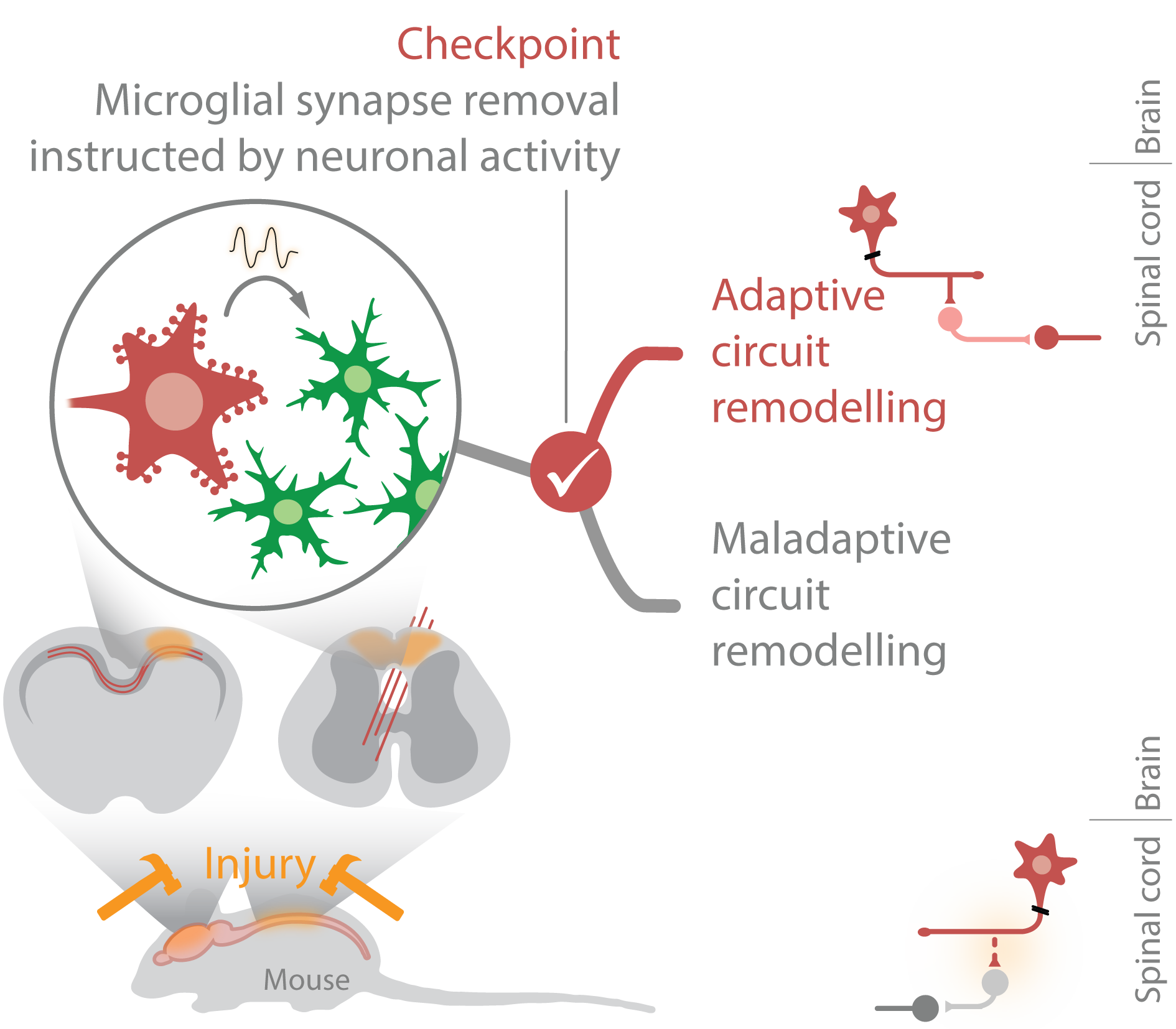Background: The re-formation of functionally meaningful circuits after CNS injury requires the removal of excessive synapses which is guided by neuronal activity.
Hypothesis: The decision regarding which synapses to remove is a central checkpoint for neuronal remodelling. Synapse removal is mediated by local microglia that are instructed by neuronal activity.
Strategy: I will combine mapping of spinal and cortical circuits with molecular profiling, targeted genetic manipulation and chemogenetics to reveal the structural and functional consequences of the interplay between microglia and neuronal activity after traumatic injuries of the CNS.

Summary
There is to date no therapy that prevents the devastating consequences of traumatic injuries to the brain or spinal cord. However previous work by us and others has shown that neuronal connections can spontaneously remodel after both traumatic spinal cord and brain injuries, a process that contributes to functional recovery and can be enhanced therapeutically. To study the principles guiding circuit remodelling in the CNS we have used the injured corticospinal tract (CST) as a model system and could show that rewiring of the injured CST proceeds in two steps: First, new circuits are formed as emerging CST collaterals enter the grey matter of the cervical spinal cord – far removed from the thoracic lesion site – and form excessive contacts with a range of spinal interneurons. In the first funding period we have primarily focused on the regulation of this initial circuit formation phase and could show that coordinatedneuronal activity as well as the timed expression of synaptogenic cues can enhance the formation of new CST circuits. However, for recovery to be successful, circuit formation needs to be followed by a second step of circuit refinement, during which functionally meaningful connections are maintained while those that do not contribute to recovery are removed. Here our results indicate a critical role of microglia cells that have emerged as the primary effectors of synapse removal during the refinement of CST circuits. Notably, microglial synapse removal is not only apparent in the spinal cord but is also a prominent feature of circuit remodelling after traumatic brain injury. Indeed, we could show that cortical transcallosal circuits undergo an adaptive remodelling process after a moderate brain injury during which transcallosal neurons in the contralateral hemisphere re-arrange their input circuitry. In the upcoming funding period we therefore want to determine how the interplay between neuronal activity and the microglia-driven synapse removal guides circuit refinement following traumatic injury to the spinal cord (Aim ❶) and cortex (Aim ❷). This approach will not only allow us to identify important checkpoints for circuit refinement but will also revealwhether such checkpoints are maintained between different injury types and locations.





